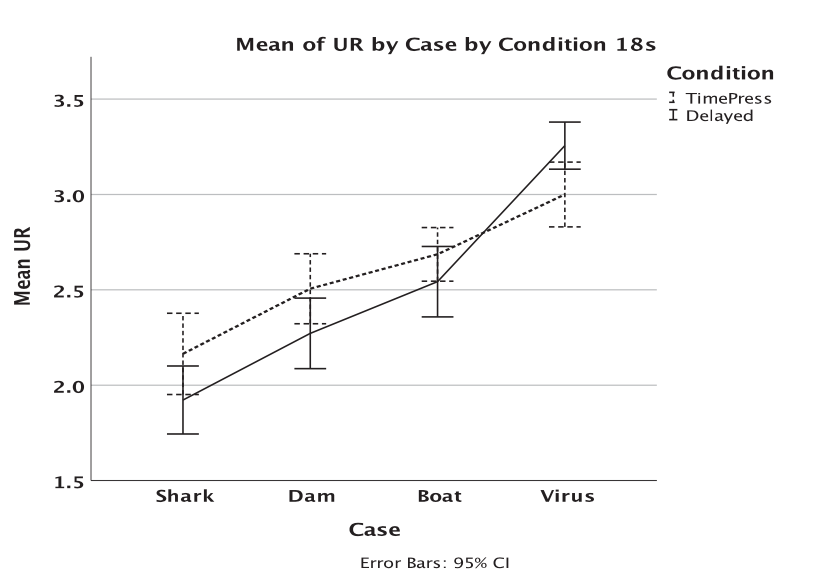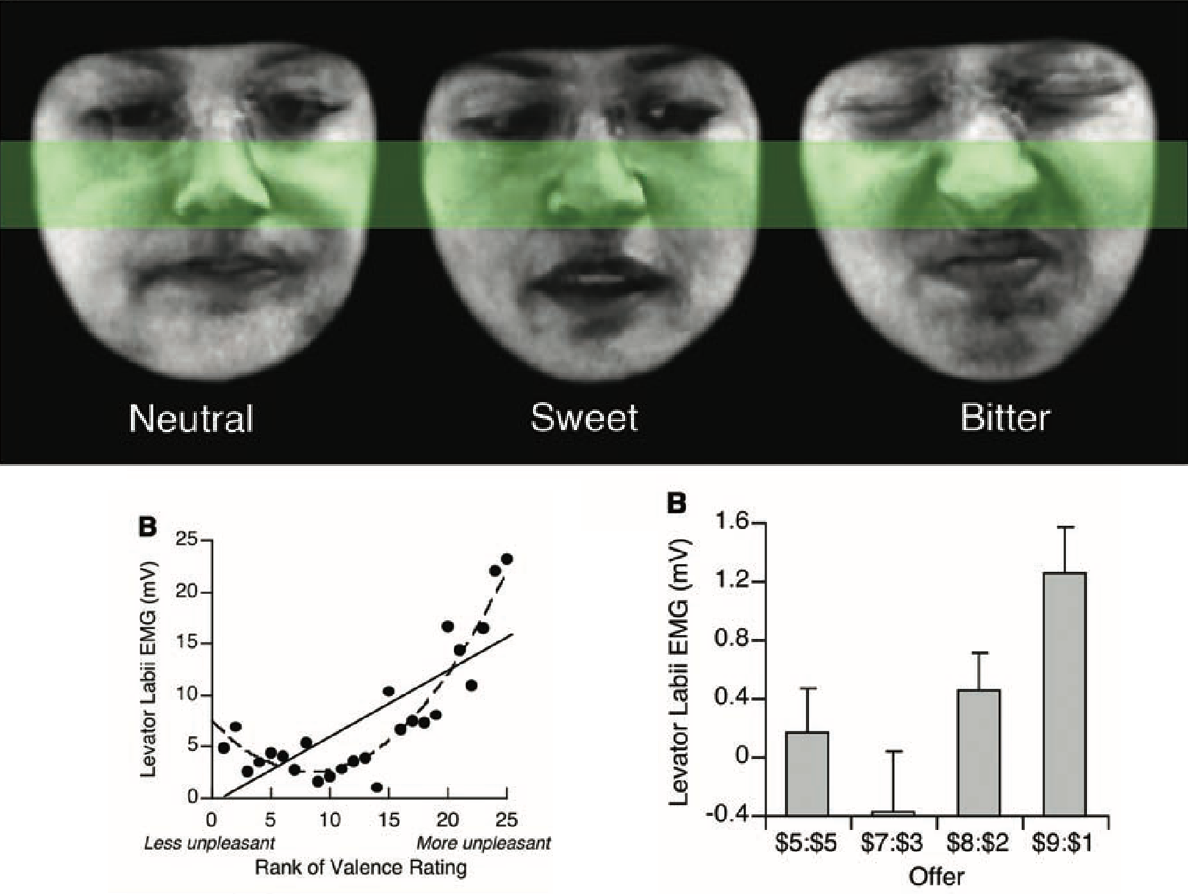Click here and press the right key for the next slide.
(This may not work on mobile or ipad. You can try using chrome or firefox, but even that may fail. Sorry.)
also ...
Press the left key to go backwards (or swipe right)
Press n to toggle whether notes are shown (or add '?notes' to the url before the #)
Press m or double tap to slide thumbnails (menu)
Press ? at any time to show the keyboard shortcuts
Minimal Virtues in Ethical Cognition

III
minimal models in ethical cognition

Greene et al’s theory
‘controlled cognition’
produces ‘utilitarian ... moral judgment aimed at promoting the “greater good” (Mill, 1861/1998)’
‘automatic emotional responses’
produce ‘competing deontological judgments that are naturally justified in terms of rights or duties (Kant, 1785/1959).’
(Greene, 2015, p. 203)
prediction: ⇧time-pressure → ⇧deontological

Suter & Hertwig, 2011 figure 1
‘participants in the time-pressure condition, relative to the no-time-pressure condition, were more likely to give ‘‘no’’ responses in high-conflict dilemmas’
fast ~ deontological; slow ~ utilitarian ?
Suter & Hertwig, 2011 : yes
Bago & de Neys, 2019 : no
Rosas & Aguilar-Pardo, 2020 : converse

Rosas & Aguilar-Pardo (2020)
fast ~ deontological; slow ~ utilitarian ?
Suter & Hertwig, 2011 : yes
Bago & de Neys, 2019 : no
Rosas & Aguilar-Pardo, 2020 : converse
fast is deontological
... because being utilitarian requires computing utility—the value of possible consequences—which demands effort.
fast is utilitarian
... because fast is ancient, and evolutionary pressures favour utilitarian outcomes
(at least for kin, perhaps for also in-group members)
Kurzban, DeScioli, & Fein (2012)
caveat: rich body of neuropsychological evidence
(Greene, 2014)
further problem: Which factors influence responses to dilemmas?
- whether an agent is part of the danger or a bystander;
- whether an action involves forceful contact with a victim;
- whether an action targets an object or the victim;
- how the victim is described (Waldmann et al., 2012).
- whether there are irrelevant alternatives (Wiegmann, Horvath, & Meyer, 2020);
- order of presentation (Schwitzgebel & Cushman, 2015);
‘various moral and nonmoral factors interact in the generation of moral judgments about dilemmas’
‘almost all these confounding factors influence judgments, along with a number of others [...] The research suggests that various moral and nonmoral factors interact in the generation of moral judgments about dilemmas’
(Waldmann et al., 2012, pp. 288–90).
an alternative: construct a minimal model of the ethical
Greene et al’s theory
‘controlled cognition’
produces ‘utilitarian ... moral judgment aimed at promoting the “greater good” (Mill, 1861/1998)’
‘automatic emotional responses’
produce ‘competing deontological judgments that are naturally justified in terms of rights or duties (Kant, 1785/1959).’
(Greene, 2015, p. 203)
prediction: ⇧time-pressure → ⇧deontological
??
What would a minimal model be a model of?
harm/care
fairness (including reciprocity)
in-group loyalty
respect for authority
purity, sanctity
(Haidt & Graham, 2007)
What processes might implement a minimal model?
instrumental conditioning
situation -> action -> outcomes -> rewards
(Dickinson, 1994, p. 48)
signature limit: persistence in extinction following devaluation
How to add an ethical twist?
first idea: vicarious rewards — expected to maximum utility
second idea: bitterness modulates rewards ✓
poison
marker: bitterness (Garcia & Hankins, 1975)
implementation: aversion to bitterness
simple, old: sea anemones vs quinine one-shot learning (Garcia & Hankins, 1975, p. 42)
adaptive: higher sensitivty (Li & Zhang, 2014) + higher threshold (Ji, 1994) in herbivores

Chapman et al. (2009, p. fig 1,3 (part))


Chapman et al. (2009, p. fig 1,3 (part))
Isn’t unfairness to abstract for a minimal theory?
12–14 month olds: Geraci & Surian (2011); Surian, Ueno, Itakura, & Meristo (2018)
How does unfairness trigger bitterness?
What processes might implement a minimal model?
instrumental conditioning
situation -> action -> outcomes -> rewards
(Dickinson, 1994, p. 48)
signature limit: persistence in extinction following devaluation
How to add an ethical twist?
first idea: vicarious rewards — expected to maximum utility
second idea: bitterness modulates rewards ✓
What would a minimal model be a model of?
harm/care
fairness (including reciprocity)
in-group loyalty
respect for authority
purity, sanctity
(Haidt & Graham, 2007)